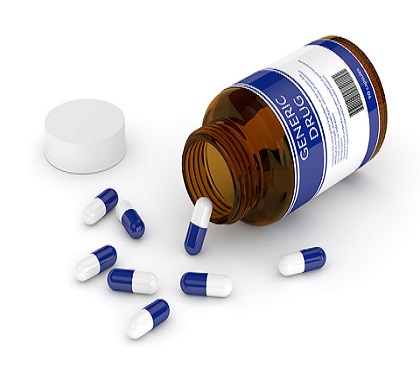In 2016, health expenditures in the United States totaled $3.3 trillion, according to the Centers for Medicare and Medicaid Services. Ten percent of this colossal amount was spent on prescription drugs. Fortunately, generic and biosimilar drugs can dramatically decrease the billions annually spent on prescription drugs.
A recent Association for Accessible Medicines (AAM) report reveals the use of generics and biosimilars in lieu of brand-name drugs reduces prescription drug prices by increasing marketplace competition, which drives down the costs of existing drugs and expands access to safe and effective medicines.
As out-of-pocket health care spending continues to rise, any measure to reduce health care costs would be a boon to patients. In 2017, consumers purchased generic drugs 97 percent of the time when both brand and generic versions were available. Patients who chose generics saved approximately $265 billion last year. Medicare and Medicaid also experienced savings of $82.7 billion and $40.6 billion, respectively, which translates to an average savings of $1,952 per Medicare enrollee and $568 per Medicaid enrollee. Over the last ten years, savings from generic drugs in the United States has increased 172 percent.
Consumers’ preference for generic drugs is not a surprise given that 93 percent of generic prescriptions are filled at $20 or less and the average copay for generic drugs is $6.06, compared to a copay of $40.30 for brand-name versions. Overall, the shift to generics and biosimilars has saved consumers nearly two trillion dollars over the last decade. States benefit, too. In 2017, states saved $5.2 billion on average by using generic prescription drugs. Statewide savings ranged from $354 million in Alaska to a high of $23.4 billion in California.
AAM exposes three factors that jeopardize patient access to generic and biosimilar medicines: market imbalances, anti-competitive tactics, and misguided government policies.
In a new Research & Commentary, Heartland Senior Policy Analyst Matthew Glans notes the drug-approval pipeline is artificially clogged with government mandates, which threatens access to life-saving generic drugs.
“Government regulations increase the time and cost of drug development. In a 2016 study, the Pioneer Institute found the drug development process typically takes 15 years to complete, a significant increase from a few decades ago … The study also found the cost of development averaged $2.6 billion in 2014,” wrote Glans.
Glans contends lawmakers should focus on consumer-friendly reforms and refrain from enacting policies that distort the prescription drug market.
“Although drug prices have skyrocketed, creating price controls—as some lawmakers have suggested—is not the answer. Commonsense reforms can bring down drug prices by streamlining the approval process for both new and generic drugs,” wrote Glans.
What We’re Working On
Education
Test Scores Show Mississippi Needs School Choice
This Research & Commentary by Policy Analyst Tim Benson analyzes the most recent results of the Mississippi Academic Assessment Program test. Unfortunately, only 40 percent of Magnolia State students reached proficiency in English language arts and just 44 percent achieved the benchmark in mathematics. The results reveal that roughly six out every 10 Mississippi public school students fail to reach proficiency and highlights the need for a change from the status quo. Benson argues Mississippi students would benefit greatly from a statewide universal education savings account (ESA) program.
Energy & Environment
Fracking Creates Massive Consumer Savings and Investment in Ohio
This Research & Commentary by Policy Analyst Tim Benson highlights a Consumer Energy Alliance (CEA) report that analyzes the massive increase in domestic shale development, led by fracking, in Ohio. This has caused natural gas prices to plummet in the Buckeye State, saving residents and businesses more than $40 billion from 2006 to 2016. In 2016, natural gas prices were 62 percent lower in Ohio than they were 10 years earlier, producing $15 billion in savings for residential consumers and $25.3 billion for commercial and industrial customers over the ten year period.
Budget & Tax
New Jersey’s Gas Tax Failure
Senior Policy Analyst Matthew Glans, in this Research & Commentary, comments on the New Jersey gasoline tax, which failed to meet revenue projections. In 2016, the state increased its gas tax by 23 percent in exchange for reductions in sales and estate taxes. The hike in the gas tax was supposed to fund infrastructure projects, but tax revenue has fallen short. Unfortunately, the gas tax rate can be increased even more to cover the shortfall. The shortfall is not surprising given that gas taxes are notoriously ineffective at producing reliable revenue and simply shift the tax burden to lower-income drivers.
Health Care
Ending Georgia Con Laws Would Spur Competition
In this Research & Commentary by Senior Policy Analyst Matthew Glans, Georgia’s certificate of need (CON) laws are examined. The Peach State is one of 35 that institute CON laws, which limit health care providers’ ability to expand services. In September, the House Rural Development Council will consider changes to Georgia’s CON program, including whether the program should be terminated. If Georgia did not have CON requirements, the state would have 74 additional health care facilities, 48 additional ambulatory surgical centers, and 27 additional rural hospitals, according to a Mercatus Center study. Ideally, the council should fully repeal the burdensome and unnecessary CON laws.
From Our Free-Market Friends
What Will the City’s New Metrolink Tax Get Us?
Last year, St. Louis voters approved a half-percent sales tax hike to fund an expansion of the local transportation system, MetroLink. Voters approved the tax hike after lawmakers promised a new 17-mile route. However, officials recently announced the expansion will only run nine miles and will cost about $700 million. Graham Renz, a policy analyst at the Show-Me Institute, believes the MetroLink expansion was a poor idea given that ridership is decreasing, partly because of the high crime level on MetroLink trains and at MetroLink stations.
Click here to subscribe to The Leaflet, the weekly government relations e-newsletter.




